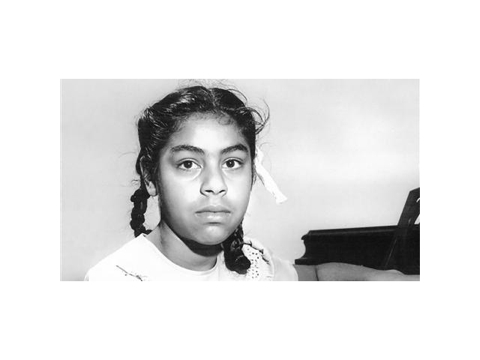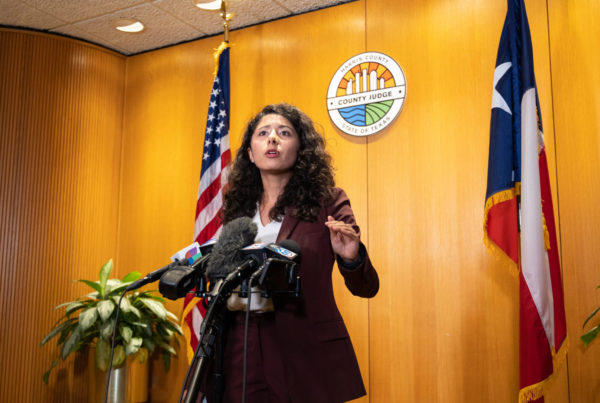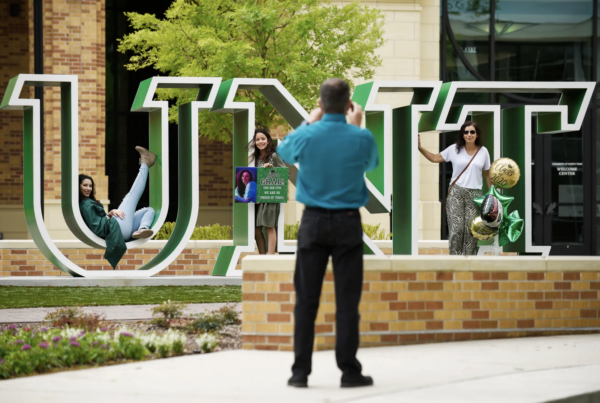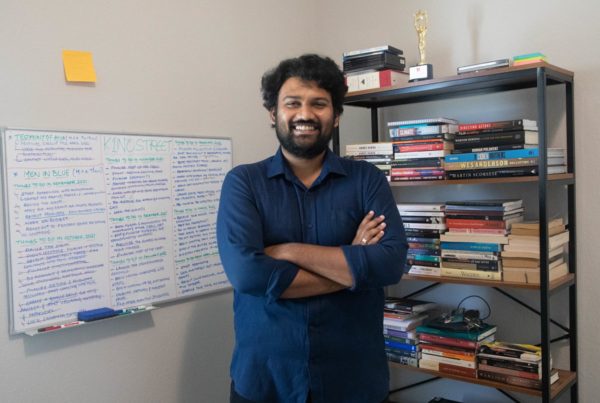On April 14, 1947, a federal court in California made a landmark decision on school segregation in a case called Mendez v. Westminster.
The Ninth Circuit Court of Appeals upheld an earlier ruling that it was unconstitutional for an Orange County school district to send Latino children to “Mexican schools,” separate from their white classmates. These schools existed throughout the southwest, including in Texas.
Lisa Ramos, associate professor of history and coordinator of the Mexican American Studies program at San Antonio College, spoke to Texas Standard about the ruling’s back story and impact. Listen to the full interview in the audio player above.
This interview has been edited lightly for clarity.
Texas Standard: Tell us a little bit more about this practice of establishing separate schools for Latino children. How widespread was it in Texas?
Lisa Ramos: It was very widespread in Texas and across the U.S. southwest. So there was the belief that any Spanish-speaking children, as they were called in the late 19th and early 20th centuries, did not need to go to school because they were going to end up working in the fields anyway. So it’s a waste of taxpayer money was the belief. There was also this fear that children who are Mexican oaredirty, unclean and should not be around, Anglo children. So there definitely were economic and health reasons that were used to justify keeping Spanish-speaking children – meaning of Mexican descent children – out of the schools that were for the white Anglo children.
Given the times and given the level of racism that was already baked into policies that we’re talking about here, what sort of argument did the plaintiffs use to show that this type of segregation was in fact, unconstitutional?
David Marcus, the attorney and the Mendez case, argued that the Mexican-descent children were being denied their 14th Amendment rights, specifically the equal protection clause. So, you cannot separate a whole group of children just because they have a Spanish surname, and that’s often what was done.
It didn’t matter that these children were born in the U.S., were U.S. citizens. It didn’t matter that they spoke only English. The fact that they had a Spanish surname would lead the school administrators to say, ‘you’re going to the Mexican school, you can’t come to the white school.’
So Marcus attacked that. He said that was unequal, unfair, unconstitutional. And also the fact that it creates this sense of inferiority for the children. Because the Mexican school was in worse-off condition, the books were the old school books from the white school. So the other argument he made was that this is creating a sense of inferiority for these schoolchildren who don’t understand why they can’t have the same type of education as white children.
This case was styled as Mendez v. Westminster. That’s a city in Orange County, California. How did that end up affecting students in Texas? How long did it take for the ripple effects to reach Texas?
You saw professors like George I Sanchez from the University of Texas at Austin work with local members of the League of United Latin American Citizens and the American GI Forum to help use the same arguments in cases in Texas to say, ‘we can’t do this here.’ This was a federal court decision declaring segregation based on Mexican ethnicity as unconstitutional. So they started making the same arguments here in the late 1940s and early 1950s.
So it became basically a template for future challenges that also proved successful.
Yeah, it was a template. And every school board or school district would try to use different arguments. They would say, ‘Oh, but the reason we do it is most of these kids don’t speak English.’ Or they’re going to leave to go pick cotton. They’re not here when the school year starts.
Again and again, a lot of these school boards tried to say, ‘we have to do it.’ But thanks to the precedent set in Mendez… I do want to give credit to Professor Sanchez and LULAC and the American GI Forum because they were working on this before the Mendez v. Westminster case. So Mexican Americans have been fighting school segregation for many years before the 40s, From the 1910s, you have cases across the U.S. southwest where working class families were fighting together with educators and lawyers to try to dismantle this. So Memphis definitely was the first successful case, but it was one of many. And fortunately, it got to the top and was able to be used by Mexican American activists across the U.S. southwest.
What’s the relationship between the Mendez case and Brown v. Board of Education, where you had the ruling that racial segregation in public schools was unconstitutional?
So Thurgood Marshall actually wrote an amicus curiae for the Mendez case.
He was at the NAACP at the time as a lawyer, I believe.
Yes, he was. And so he actually, along with many other groups – Japanese American groups, Jewish groups – wrote the statements of support, stating that segregation is unequal.
So the Mendez case did not say separate but equal was unconstitutional. The Mendez case said that the separation of students based on ethnic Mexican descent is unconstitutional. So what Thurgood Marshall and the NAACP did in Brown is they extended that and they said, ‘we want to knock down the whole concept of separate but unequal.’ It doesn’t matter. It is Mexican American and it’s Black schoolchildren. Japanese-American, just the whole concept is unconstitutional. And that’s what made Brown successful.
But it was building off of what Mendez had done and the strategies that were used and Mendez were also used in Brown. So for instance, you had an educational expert and a sociologist testify in the Mendez case that separating these school children teaches them that they’re not as worthy – teaches Mexican Americans that you don’t deserve the same thing as these other children because of your last name, because of your skin color, because of your ethnicity.
What Thurgood Marshall did is to use similar testimony by other educational experts and sociologists, saying African American schoolchildren are also feeling the sense of inferiority because of this separation. But it’s also unconstitutional because these separate schools are actually very unequal. We’re creating a two-tiered system where some are treated as first class citizens and others are second class.
It sounds as if Mendez really did lay the legal foundation in a sense for what would come in Brown v. Board of Education.
Yes, definitely. It gave ideas to the Brown legal team on what kind of arguments to make, who to bring in as experts to further that use of the 14th Amendment and the equal protection clause, saying We have to look out for our students, they’re not being treated equally. So definitely members had a huge impact.














